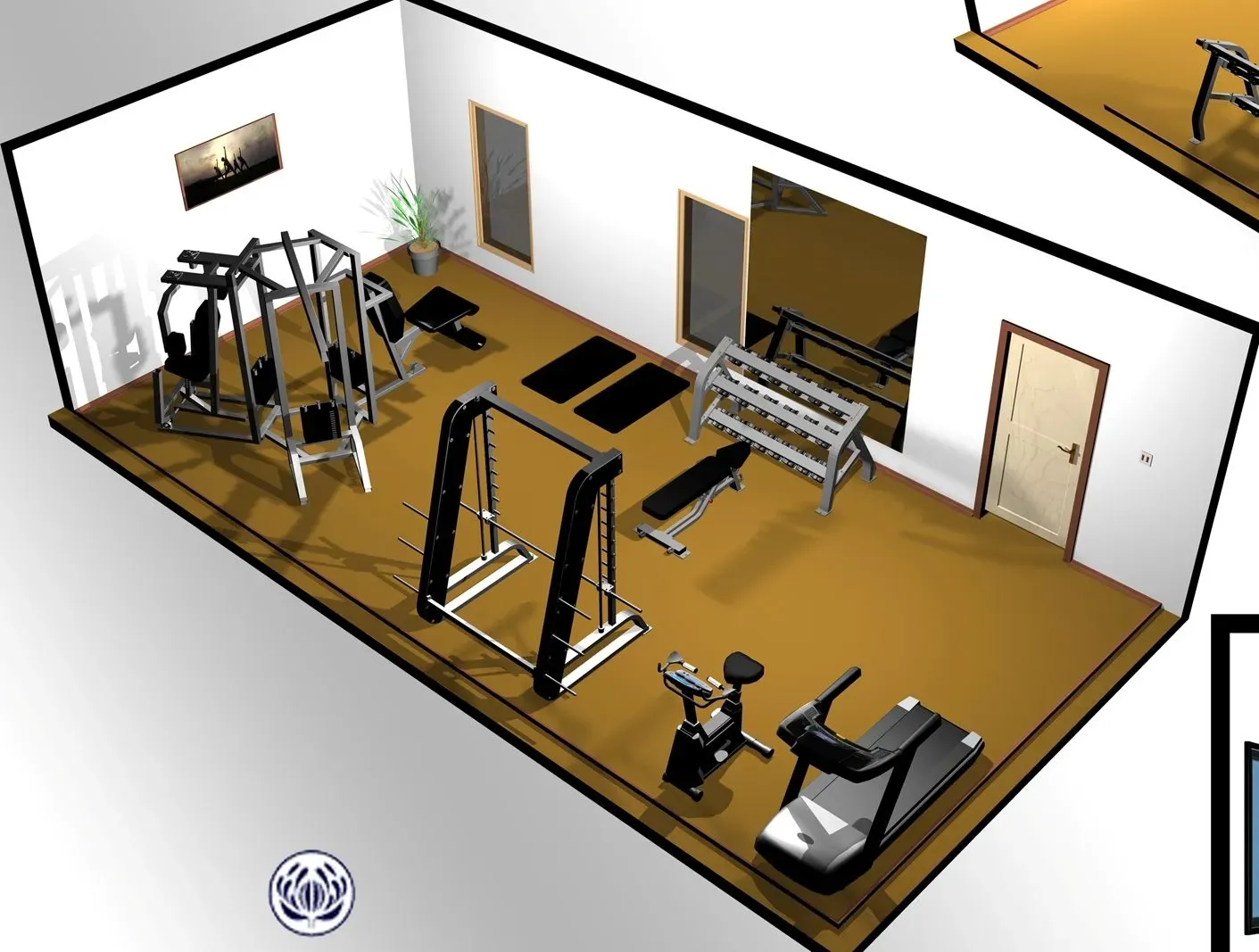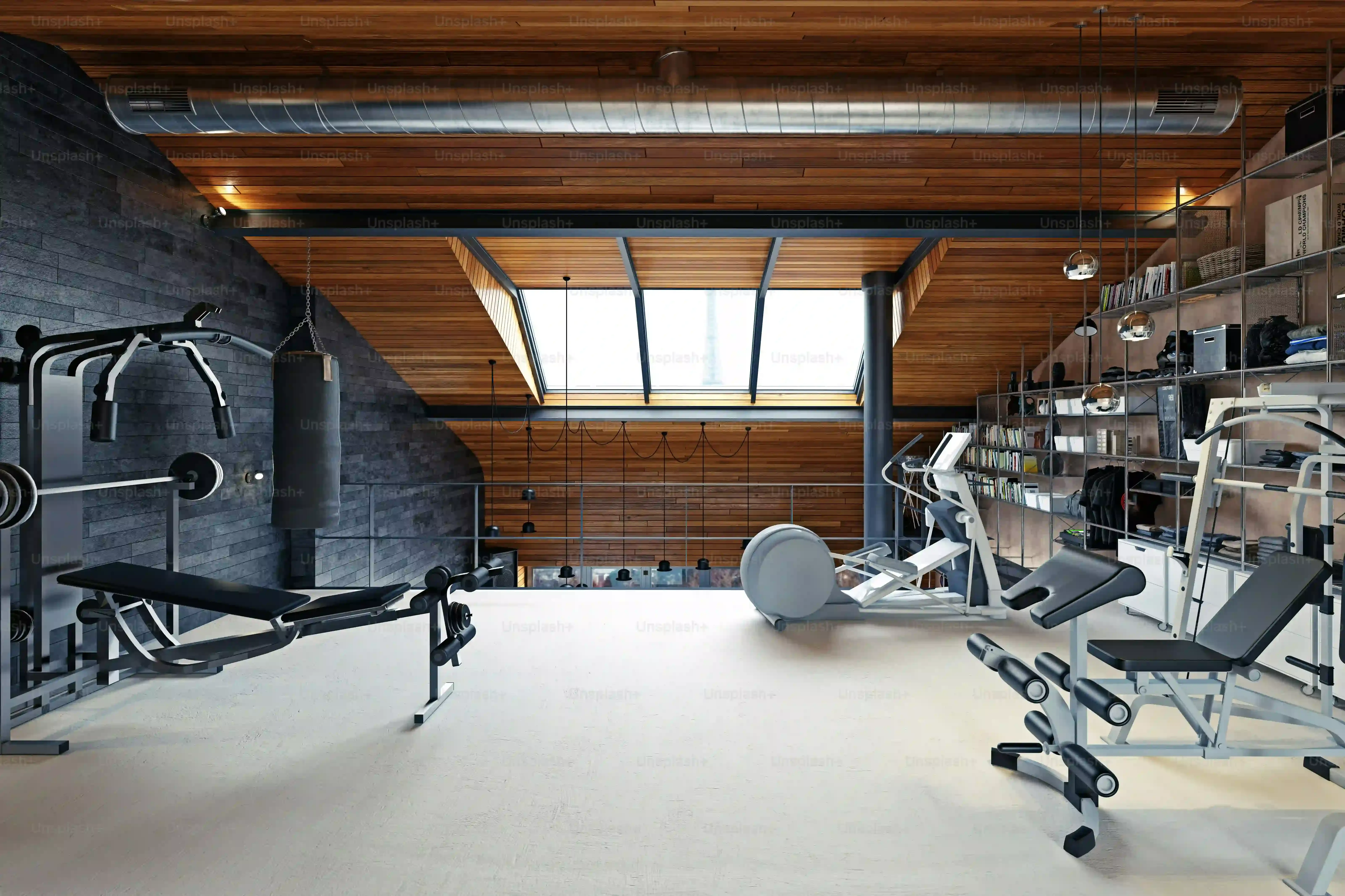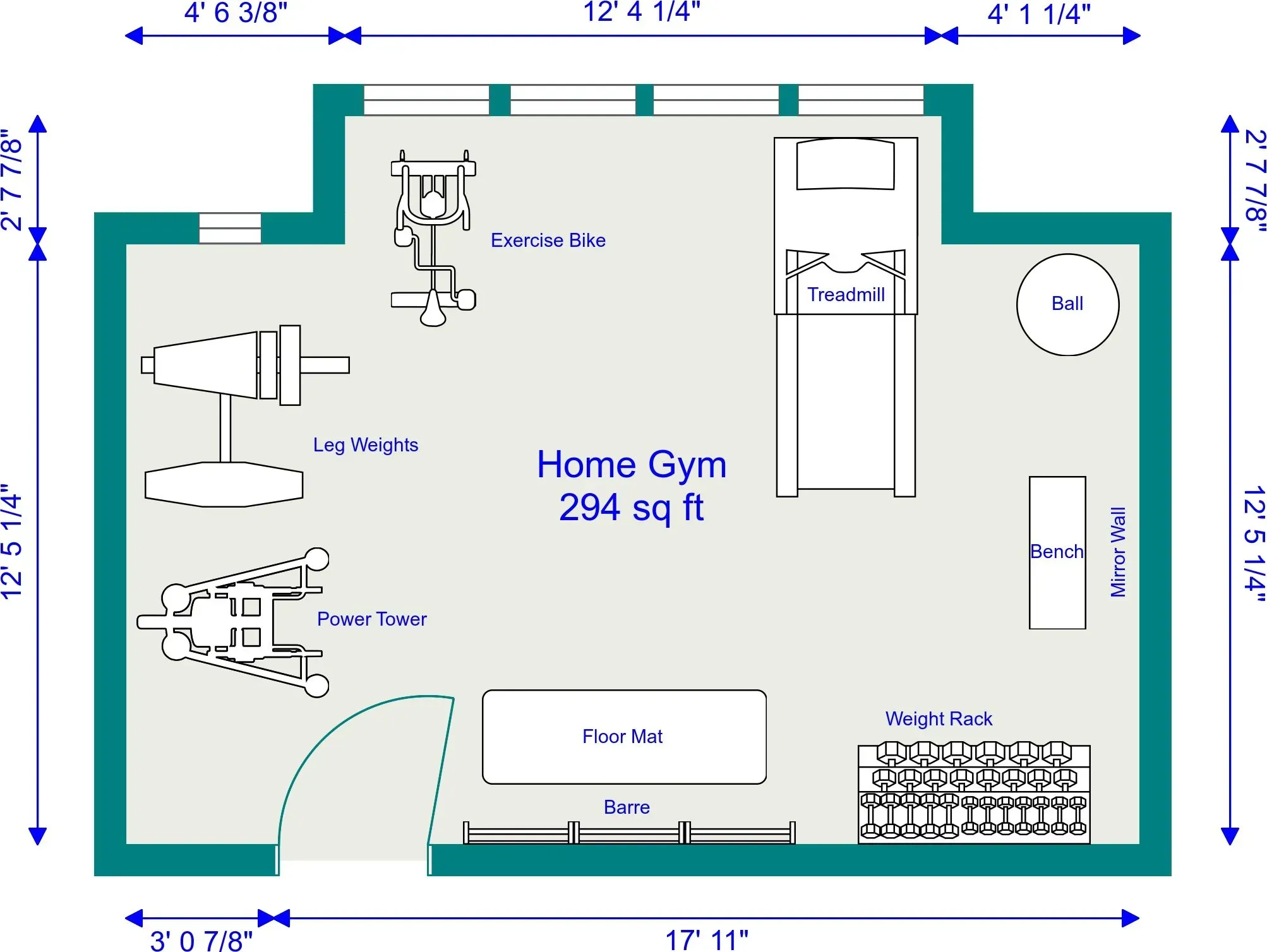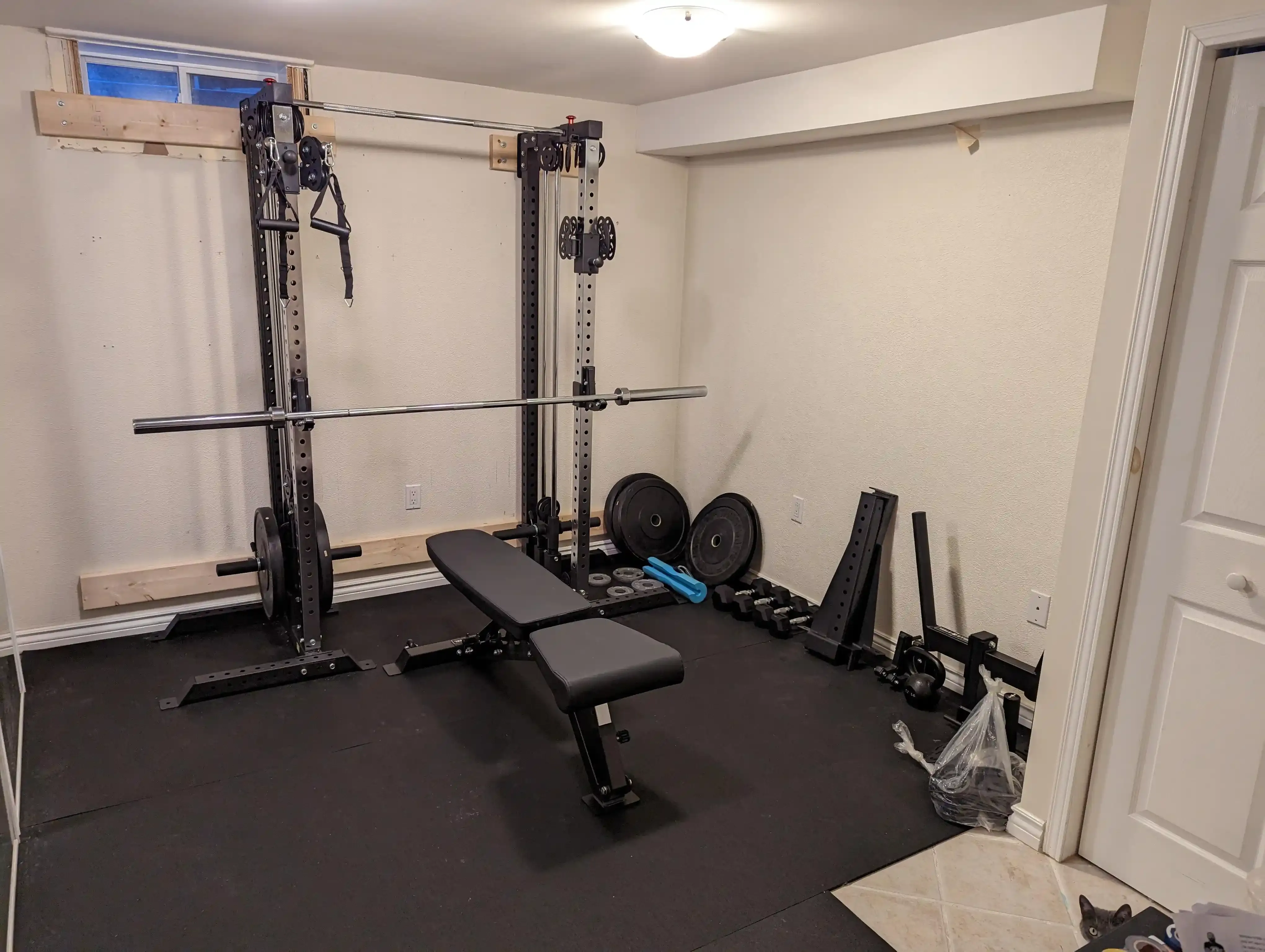Table of Contents
Staring at an empty 8x10 room, you might think it's barely enough space for a bed, let alone a place to crush workouts. Forget sprawling commercial gyms with endless rows of machines. You're working with just 80 square feet. The question isn't "can I build a gym?" but rather "how do I build a *functional* gym in this box?" It's a common puzzle for anyone trying to ditch the commute and sweat at home. This isn't about fitting everything you see on Instagram; it's about smart choices and ruthless efficiency. Planning your 8 x 10 home gym layout requires a clear head and realistic expectations. We'll cut through the fluff and show you exactly what fits, how to arrange it safely, and the gear that gives you the most bang for your limited square footage. Get ready to transform that small space into a serious training zone.
Getting Started: What Fits in an 8x10 Space?
Getting Started: What Fits in an 8x10 Space?
Facing the 8x10 Reality
Let's be blunt: an 8 x 10 home gym layout is not a powerlifting dungeon or a full-blown CrossFit box. It’s 80 square feet. That's roughly the size of a small bedroom closet or a slightly oversized garden shed. You won't fit a power rack, a full dumbbell set from 5 to 100 lbs, three cardio machines, and a cable crossover station in here. Anyone telling you otherwise is selling something or hasn't measured a room lately. The key here is prioritizing. What are your actual fitness goals? Are you lifting heavy, focusing on conditioning, or doing bodyweight work? Your answer dictates what precious few pieces of equipment make the cut for your 8x10 home gym layout.
Equipment That Doesn't Require a Warehouse
Despite the size constraints, you can build a highly effective training space. Think multi-functional gear and items that store vertically or stack neatly. A simple squat stand (not a full cage) is often a possibility, provided your ceiling height allows for overhead movements. Adjustable dumbbells or kettlebells are game-changers, replacing dozens of fixed-weight items. A sturdy bench, preferably one that declines or folds, is crucial. Bodyweight tools like pull-up bars (door frame or wall-mounted), rings, and resistance bands take up minimal space but offer immense versatility. You might even squeeze in a single, compact cardio machine like a spin bike or a folding treadmill if it's your absolute priority, but be prepared for it to dominate the room.
Here's a quick look at equipment categories that often play nice with an 8x10 footprint:
- Adjustable Dumbbells/Kettlebells
- Bench (folding or adjustable)
- Barbell and Bumper Plates (stored vertically)
- Squat Stand or Half Rack (check height!)
- Pull-up Bar (door frame or wall-mounted)
- Resistance Bands
- Jump Rope
- Yoga Mat / Flooring
- Wall-mounted Storage for Plates/Dumbbells
Planning Your 8 x 10 Home Gym Layout
Planning Your 8 x 10 Home Gym Layout
Measure Twice, Buy Once (Seriously)
Before you even think about buying a single plate or dumbbell, grab a tape measure. An 8 x 10 home gym layout sounds straightforward, but walls aren't always perfectly straight, and that corner you planned for the bench might have an awkward electrical outlet or a heating vent. Measure the usable floor space exactly. Then, measure the ceiling height. This is critical, especially if you plan on doing overhead presses, pull-ups, or using a squat stand. A standard barbell is 7 feet long; can you even stand it up vertically in the corner for storage without hitting the ceiling? Don't guess. Knowing the precise dimensions dictates everything that comes next.
Mapping Your Movement Flow
you know the numbers. Now, visualize your actual workouts in this 8 x 10 home gym layout. Where will you rack the bar for squats? How much space do you need behind you for deadlifts? Can you swing a kettlebell without hitting the wall or a window? If you get a bench, can you move it easily out of the way for floor exercises? Think about clearance around each piece of equipment. You need room to load plates, step back from a pull-up bar, or safely bail on a lift. Draw it out on paper, or even use masking tape on the floor to mock up where your key pieces will go. It feels a bit silly, but it beats smashing your elbow into the wall mid-set.
Consider these space killers:
- Barbell length during lifts (especially deadlifts and rows)
- Clearance for overhead presses or jerks (ceiling height!)
- Swing radius for kettlebells or clubbells
- Space needed to get on/off a bench or cardio machine
- Room to load and unload plates
- Space for dynamic movements like jump rope or burpees
Essential Equipment for an 8 x 10 Home Gym Layout
Essential Equipment for an 8 x 10 Home Gym Layout
Starting Lean: The Non-Negotiables
When you're dealing with an 8 x 10 home gym layout, every square foot counts. You can't afford clutter. The absolute essentials should be versatile and compact. Think about what allows you to hit the major movement patterns: pushing, pulling, squatting, hinging. Adjustable dumbbells or kettlebells are almost mandatory. A good set can replace dozens of fixed weights, saving significant floor space. A sturdy, adjustable bench is also critical for pressing, rowing, and other exercises. Look for one that can incline, decline, and ideally, fold up or stand vertically when not in use. These core pieces form the foundation of most effective small-space gyms.
Adding Strength: Barbell, Plates, and Support
If lifting heavier is your goal, you'll want a barbell and plates. Bumper plates are great because they're durable and often have a consistent diameter, but they take up space. Steel plates are thinner but louder. Regardless, you'll need vertical storage solutions for the plates and the barbell itself. A squat stand or a half rack is often the biggest piece of equipment in an 8 x 10 home gym layout. Measure your ceiling height *before* buying. You need clearance for overhead presses and to safely rack the bar. Don't underestimate the space needed in front and behind the rack for loading and movement. A full power cage is usually a non-starter in this size room.
Common Strength Gear Footprints (Approximate):
- Squat Stand: 4ft x 4ft (plus clearance)
- Half Rack: 4ft x 5ft (plus clearance)
- Bench: 4ft x 1.5ft (plus space for user)
- Barbell (7ft): Needs 7ft vertical storage or horizontal rack space
- Plate Storage Tree: 2ft x 2ft
Rounding Out Your Arsenal and Staying Organized
Beyond the heavy hitters, consider lighter, highly functional items. Resistance bands are cheap, take up zero space, and add resistance or assistance to countless exercises. A jump rope is fantastic for cardio and warms-ups. Rings or a TRX system can hang from a pull-up bar or ceiling mount (again, check ceiling strength and height) and provide excellent bodyweight options. Flooring is often overlooked but essential for protecting your subfloor and providing grip; 3/4 inch rubber mats are standard. Finally, storage is key in an 8 x 10 home gym layout. Can you mount plate holders or dumbbell racks on the wall? Vertical storage is your friend. Remember, if it doesn't have a home, it's clutter, and clutter eats precious square footage.
Ever tried to do burpees and kicked a stray dumbbell? It's not fun. Keeping things tidy isn't just about aesthetics; it's about safety and maximizing your usable workout area.
Smart Strategies for Maximizing Your 8x10 Home Gym Layout
Smart Strategies for Maximizing Your 8x10 Home Gym Layout
Making Every Inch Count
so you've measured, you've planned, and you know you're working with a shoebox. Now comes the fun part: cramming as much awesome into your 8 x 10 home gym layout as humanly possible without tripping over yourself. This isn't just about fitting gear; it's about creating a flow that makes sense for your training. Think vertical. Wall-mounted storage for plates, dumbbells, and even barbells frees up crucial floor space. Foldable benches or racks that tuck away when not in use are worth their weight in gold. Can your bench stand upright? Does your cardio machine fold? These details matter immensely when 80 square feet is all you've got. Don't let sentimentality clutter your space; if a piece of equipment doesn't serve a primary purpose for your goals, it's probably not worth the real estate.
Ask yourself these questions before buying bulky gear:
- Does this piece serve multiple purposes?
- Can it be stored vertically or folded away?
- Is there enough clearance around it for safe use?
- Is there a more compact alternative that does the same job?
Making It Work: RealWorld 8x10 Home Gym Layout Examples
Making It Work: RealWorld 8x10 Home Gym Layout Examples
Real Spaces, Real Solutions
Look, seeing is believing when it comes to cramming a functional gym into a space the size of a walk-in closet. People make 8 x 10 home gym layout work by being brutal about their priorities and creative with storage. You'll find setups centered around adjustable dumbbells and a bench, leaving floor space clear for bodyweight circuits or a single cardio machine. Others ditch the cardio entirely to fit a half rack for barbell work, accepting that deadlifts might require moving the bench out of the way or even cracking the door open. Some embrace calisthenics fully, with rings, a pull-up bar, and parallettes, requiring little floor space but demanding ceiling height. There's no single perfect 8x10 setup; it's a direct reflection of the owner's training style and willingness to compromise.
Here are a few common successful 8x10 configurations:
- The Minimalist Lifter: Adjustable dumbbells, adjustable bench, pull-up bar, kettlebell. Focus on compound movements and variations.
- The Barbell Enthusiast: Half rack (if ceiling allows), barbell, plates (vertical storage), adjustable bench. Cardio happens elsewhere.
- The Bodyweight Boss: Pull-up bar, rings, parallettes, resistance bands, plenty of open floor space.
- The Cardio Corner: Compact treadmill or spin bike, adjustable dumbbells or kettlebell, resistance bands. Floor work space is limited.
Your 8x10 Gym: More Than Just a Room
So, you've seen that an 8x10 space isn't a death sentence for your fitness goals. It demands brutal honesty about what you *actually* need versus what you *want*, and a strategic approach to layout. It won't have a sauna or a smoothie bar, but with careful planning and the right gear, it becomes a dedicated training environment. It's about making deliberate choices to maximize every square foot, ensuring safety and effectiveness. Building a gym in this size isn't just about fitting equipment; it's about creating a consistent, accessible place to train, proving that serious progress doesn't require serious square footage.